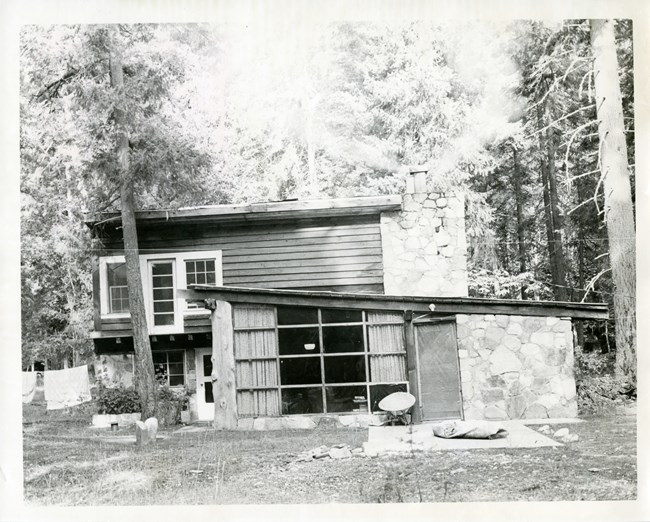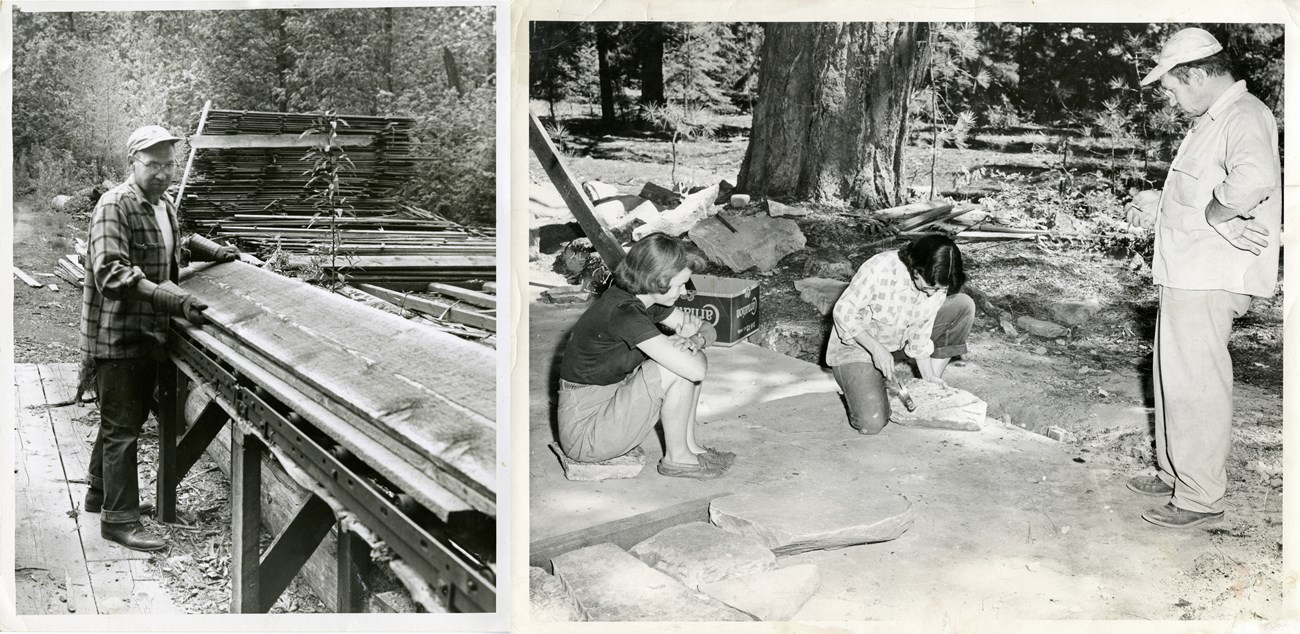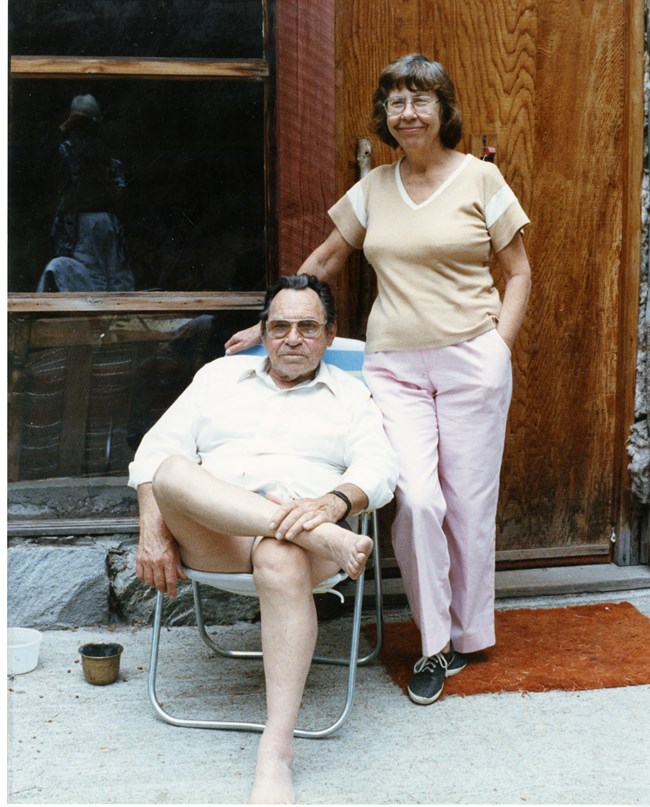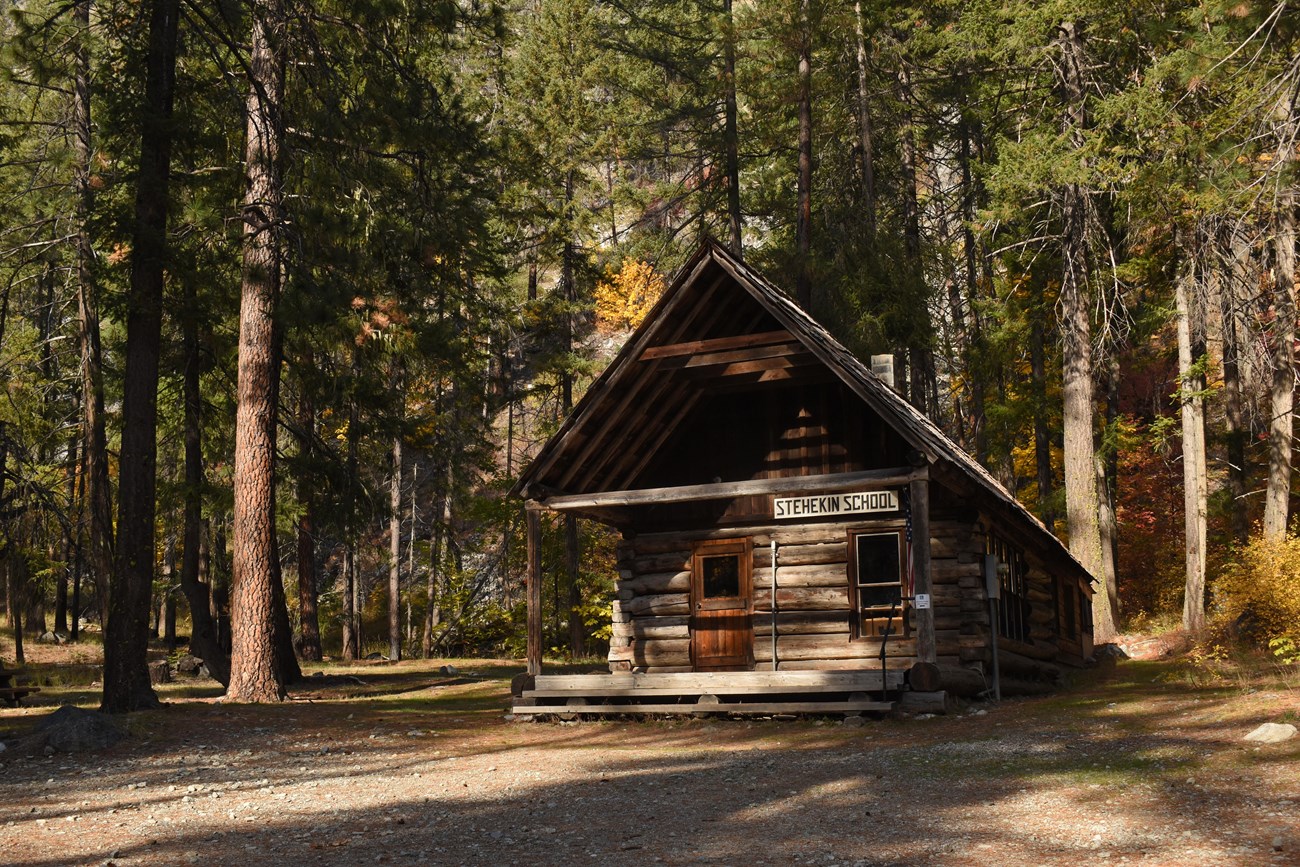Last updated: August 10, 2022
Article
More than a Modern Homestead: the Legacy of Lloyd and Amy Bell in Stehekin Valley

Photo courtesy of the Bell Family.
From the late 1940’s through the 1990’s, Lloyd and Amy Bell were prominent residents in the Stehekin Valley, teaching class, working in the community, and supporting the school.
The Bells built a home over the decades they lived in Stehekin, a house that was beautifully situated near the Stehekin River, but which also became threatened by worsening floods. For the Bells, creating a house was never about the final product. Instead, the process of building a home was how they exemplified the hard-working spirit of Stehekin Valley residents and became the foundation of the legacy they would leave from their decades of teaching.
Lloyd and Amy Bell met at Cheney Teachers College and co-taught (on a single teacher salary) at the one-room schoolhouse in Stehekin starting in 1948. The Bells helped re-open the Stehekin School, which had been closed during World War II, making it a central part of the Stehekin community. They taught in the valley during the 1940’s, 1950’s and 1960’s.
In 1949, the Bells bought property near a bend in the river near the head of Lake Chelan with plans to build a home.
With the valley walls rising so steeply in every direction, the Stehekin River floodplain is the only flat, relatively fertile ground to build on north of Lake Chelan. Like homesteaders had done in Stehekin since the late 1800’s, choosing a site for a home on this land was about working with and around the natural forces that dominate the area. With the information that the Stehekin River floods at least every spring—when the snowmelt from higher mountains rushes down into the valley—the Bells tried to pick a spot that would avoid all but the worst of the floods. They studied mud marks on trees and built their home away from the areas that commonly flooded in the 1940’s.
The construction of the house was typical of many homes in Stehekin, using local materials and adding on to the construction as time and budget allowed. From the first pour of concrete to eventual outbuildings on the property, they continued to add on rooms over the next decades. Here they raised a daughter, Caity.
Caity Bell Karapostoles remembers her parents’ ability to ‘learn as they went’ as their built their house without any previous construction training:
"If you took a look at the stairwell where my mom started her masonry experience, it was pretty bad. It was very, very rough, but she got better as they went along, and she would say that my dad would come home from school and lift the big heavy rocks into place, and then she would work around them with mortar and small rocks and things like that, until she had a wall done."

Right: Amy, pictured center, did much of the rock work. Their friend Julie Richardson, on left, and Lloyd look on.
Photos courtesy of the Bell Family
Almost all the wood for the house came from trees on the property and was milled in Stehekin. Rocks for the fireplace were collected from throughout the valley—though they used whatever was around to fill in the masonry in the chimney, including old bed springs, car parts, and pieces of metal. Caity recalls that “my folks started building the house in 1949, but they really never finished. It kind of grew as their needs grew, and my dad said ‘I've got five acres of land; we'll just build till we run out of the property.’”
Like most residents living in Stehekin Valley in the 1950’s and 1960’s, the Bells hand-dug a well but had no indoor plumbing.

Photo courtesy of the Bell Family
The Bell’s house was eligible for listing on the National Register of Historic Places as an intact example of a mid-century modern cabin and because of the Bell’s contributions to the development of the Stehekin area.
However, by the time the house was sold to the National Park Service in 2016, it was in disrepair and lay within the channel migration zone of the Stehekin River. The channel migration zone is where the river has historically flowed over the past 1,000 years and where the threat of flooding is the greatest. Changes in the river course and climate have made flooding along the river more extreme over the past decades and the Bell House was threatened. A detailed assessment of the property revealed that preserving the Bell house would require expensive repairs and rehabilitation to maintain the structure and to attempt to protect it from the increasing flooding potential and the hazards associated with flowing debris.
Along with helping preserve natural and cultural resources in the park, the National Park Service is tasked with identifying properties most at risk from severe or long-term flooding before they affect the Stehekin River and other park resources, as described in the Lake Chelan National Recreation Area Land Protection Plan. After completing both historical and natural studies of the land and the house, the National Park Service determined the benefits of restoring the channel mitigation zone outweighed the benefits of historic preservation of the Bell house.
The house was demolished in 2019. Some materials were recycled, while others like asbestos were disposed of. The river channel migration zone was restored using native vegetation grown through the park complex’s revegetation program in Stehekin.
Today, the legacy of the Bells continues in other ways in Stehekin Valley.When the Bells came to Stehekin, the Stehekin School was part of Chelan School District. Eventually, with the help of the Bells and the community, the state recognized the school as a remote school. It operates today as an independent school with its own school board and between two and twenty-seven students study at the school each year. In 2021, on the 100th anniversary of the old Stehekin school building, Stehekin resident Tom Courtney put it simply: “Lloyd was my first and best teacher in the Stehekin School.”
Visitors to Stehekin Valley can visit the old one-room schoolhouse at mile 3.4 on the Stehekin Valley Road to see what school would have been like during the days when the Bells were teachers and learn more about both Lloyd and Amy. The modern school, built in 1988, stands nearby.
Like many Stehekin residents, the Bells found living close to the land and constructing their own house had both its rewards and challenges. For the Bells, both their time in the classroom and out as part of the Stehekin community proved that creating a home was much bigger than just the house.

NPS/Bryanna Plog
